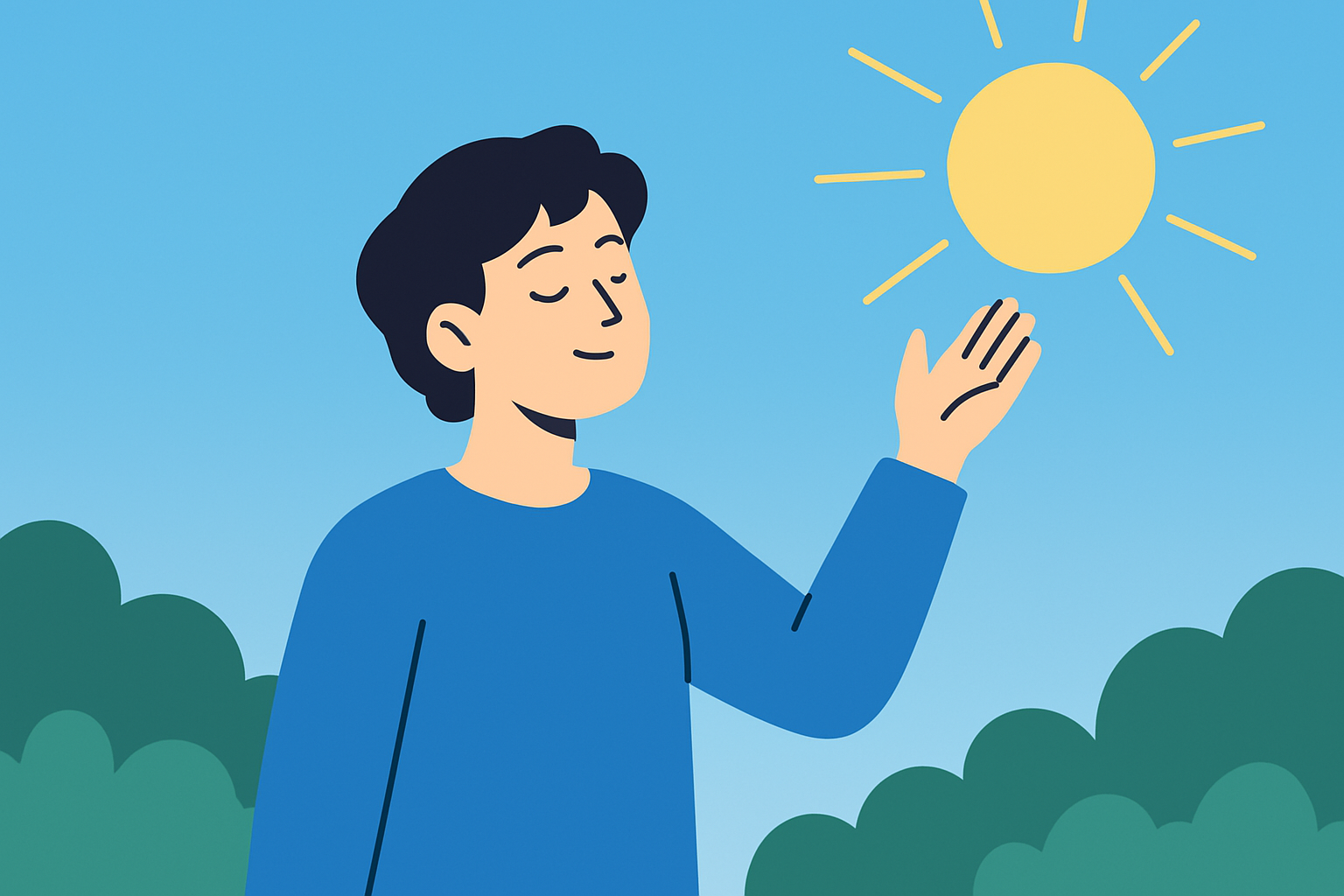Sunlight is one of nature’s most powerful—and underutilized—tools for better health. It’s free, abundant, and profoundly effective at improving everything from your sleep to your mood. But for many of us, modern life conspires to keep us indoors. We work in offices, drive in cars, and relax in front of screens. Natural light barely gets a look-in.
But what if you could change that? What if, over the course of just a month, you could rewire your routine to spend more time outside—boosting your energy, sharpening your focus, and sleeping more deeply each night?
If you love habits and thrive on data, this post is for you. We’re diving into how to build a sunlight habit that sticks, using a blend of behavioral science, practical strategies, and some AI-powered support along the way.
Why You Should Care About Natural Light
Getting outside into natural light isn’t just pleasant—it’s biologically essential. Your body’s internal clock, known as the circadian rhythm, runs on light cues. When you get outside in the morning, your brain gets a clear message: it’s time to wake up, focus, and engage.
Here’s what the science says:
| Benefit | Scientific Backing |
|---|---|
| Improved Sleep | Daylight exposure improves melatonin regulation and deepens sleep cycles [1] |
| Boosted Mood | Increased serotonin levels correlate with natural light exposure [2] |
| Better Focus and Alertness | Studies link morning sunlight to increased cognitive performance [3] |
| Decreased Depression Risk | Light therapy is a proven treatment for Seasonal Affective Disorder (SAD) [4] |
Why Is This So Hard?
Despite the clear benefits, most people struggle to consistently get outside. We live indoor lives, structured by digital calendars and temperature-controlled environments. Here are some common reasons daylight is missing from our routines:
- Sedentary desk jobs that prioritize screen time over walk time
- Apartment living in urban areas with poor sunlight access
- Busy morning schedules that skip over outdoor time
- Low motivation during cold, dark seasons
It’s not just laziness—it’s infrastructure. That’s why changing your behavior takes more than willpower; it takes design.
Build a Sunlight Habit With Behavioral Design
To turn daylight into a daily habit, you’ll need a strategy that blends intentionality and data. Think of it like creating a blueprint: you assess where you are now, implement small adjustments, and scale up strategically.
Here’s a simple roadmap to help you get there:
| Day Range | Action Plan |
| Days 1-7 | Track your current exposure using a smartwatch, app, or even manual logs |
| Days 8-14 | Start a micro-habit: 5 minutes of morning sun (walk, balcony, window) |
| Days 15-21 | Increase exposure to 15–20 minutes; pair with an existing habit like morning coffee |
| Days 22-30 | Solidify by moving to 30+ minutes, ideally before 10 AM; try outdoor meetings or walks |
The key here is gradual expansion. You’re not aiming for perfection—you’re building consistency. Let the data guide you.
Make It Stick: Tips That Work
Daylight habits are more sustainable when they’re simple, flexible, and tied to things you already enjoy. A well-crafted habit isn’t a burden—it’s a boost.
- Get outside early: Light in the first 2 hours after waking is the most effective for regulating sleep cycles.
- Stack habits: Combine light exposure with routines you already do—coffee, podcasts, journaling.
- Move your body: Walking boosts light exposure and enhances cognitive function.
- Track your metrics: Seeing progress visually helps reinforce your commitment.
Key Metrics Worth Tracking
| Metric | Why It Matters |
| Minutes of Daily Exposure | Establishes baseline and tracks progress |
| Sleep Onset Time | Improves with morning light due to circadian realignment |
| Mood Score (1–10) | Often elevates with more time spent in sunlight |
| Energy Levels (1–10) | Light exposure boosts daytime alertness |
Tools of the Trade
- Smartwatches with ambient light sensors (e.g., Apple Watch, Garmin)
- Apps like D Minder or SunDay to track and remind
- Analog methods like habit journals or Notion templates
- Google Calendar blocks for sunlight breaks
These tools don’t just track behavior—they reinforce it. When you measure, you tend to improve.
How the 30 Day Habits AI Coach Helps You Succeed
If you’ve ever set out with the best intentions and still failed to change a habit, you’re not alone. That’s why the AI Coach doesn’t just give you a plan—it adapts with you.
Here’s what makes the 30 Day Habits AI Coach different:
- Predictive Success Modeling: The AI analyzes your behavior patterns and calculates your probability of success—adjusting your strategy accordingly.
- Dynamic Personalization: If you’re falling behind or getting ahead, the plan shifts. The timing, type, and intensity of your habit suggestions evolve over time.
- Multichannel Reminders: The AI sends personalized SMS and email nudges when you’re most likely to need them.
- Data-Driven Adjustments: You’ll get weekly reports showing your progress and suggesting ways to boost your momentum.
- Motivation That Scales: The difficulty ramps up gradually as your habit becomes stronger, helping you go from micro-wins to macro-change.
Whether you’re a spreadsheet junkie, smartwatch wearer, or just someone who wants to sleep better and feel happier, the AI Coach is your strategic partner.
Start small. Start smart. Step into the light—and let your new habit begin.

